
IN THE SERIES: MAIN | SUICIDES | ACCIDENTAL SHOOTINGS | UNSOLVED SHOOTINGS | SHOT BY A COP | LIMITING VIOLENCE
Chris Virgin pointed a gun to her forehead. Still, she didn’t believe her longtime boyfriend would pull the trigger.
He’s not gonna shoot me.
A bullet blew off her ear tip and grazed her skull. Blood dripping down her side awakened Laura Hutchinson to the reality of her situation.
Hutchinson was one of 176 people shot in Volusia and Flagler counties in 2018. She survived, but 112 others did not.
The dead and wounded weren’t attacked in mass shootings. They weren’t targeted in public rampages at a high school or nightclub. With few exceptions, they were shot one at a time — a homicide here, an outburst of anger or an accident there — and almost always by someone they knew.
More than half shot themselves, intentionally or by mistake, with suicides accounting for nearly 4 out of 5 fatal shootings — 12 percent higher than the national average.
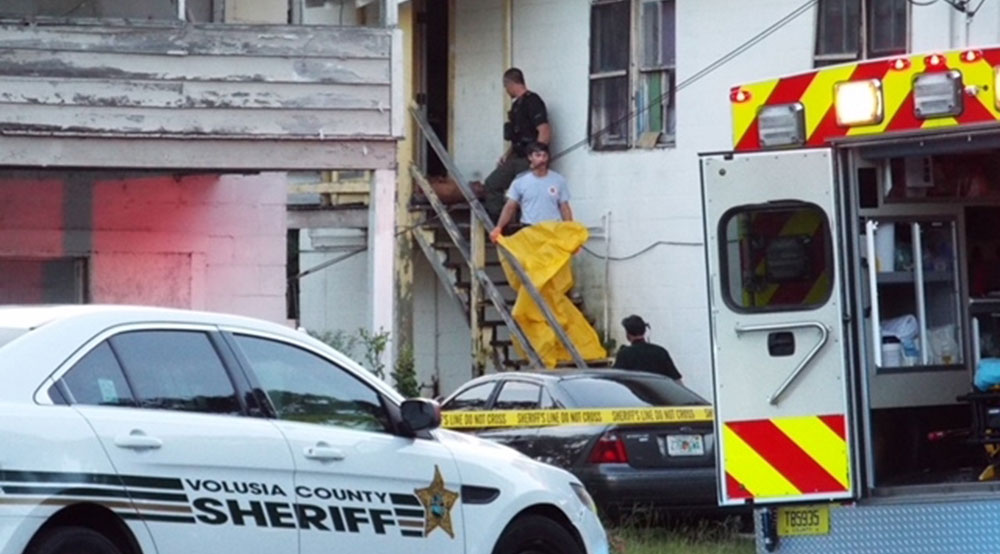
The News-Journal set out to compile and analyze every incident in which a person was shot in Volusia and Flagler counties over the course of a year. It's the first time anyone has conducted such a study in the area. No single source tracks every shooting, so the effort required that reporters make dozens of public records requests to 15 local law enforcement agencies in order to build a comprehensive list.
Because of the way records are catalogued, those requests still may not have uncovered every victim.
Each incident report collected tells the story of a person, family or community’s traumatic experience. All together, they weave a broader narrative about gun accessibility, mental health and firearm storage.
The News-Journal attempted to contact every person who survived being shot here last year — and in some cases, a loved one of those who didn’t. Several shared their stories.
Many, like 64-year-old Wallace “Wayne” Wiggins, committed suicide after long battles with grief or medical and mental ailments. A few, such as Christopher Mazza, wounded themselves while cleaning or discharging weapons. Three men gunned down by a Daytona Beach drug dealer were among 61 shot in criminal attacks.
And seven, including Hutchinson, were shot by romantic partners.
‘Zero to 100’
For days Laura Hutchinson had witnessed her partner, George “Chris” Virgin, drinking and fighting with his 22-year-old son, who’d moved into the Palm Coast couple’s home. The ongoing friction strained their relationship.
Virgin, 65, was on a drinking binge and had been feuding with his son for four days by the evening of June 23, 2018, when Hutchinson decided that getting some food into her boyfriend might help him sober up. It had worked in the past.
“Once he eats, he passes out,” said Hutchinson, 47. She ordered Chinese food, but Virgin thought it cost too much. A $2 discrepancy ignited his ire.
Hutchinson sat down in a recliner to sort things out.
The situation escalated “from zero to 100, and it was crazy,” Hutchinson said. “It really had nothing to do with me.”
While she looked up her order on the restaurant’s website, Virgin struck her in the face with an open hand twice, according to an arrest report.
“The second time, he hit me really hard,” Hutchinson said.
The blow knocked her to the side. When she recovered and looked up, Virgin was aiming a Smith and Wesson .357 Magnum revolver at her, about 6 inches from her forehead.
He had held a gun to her head once before, she said. Perhaps that’s why she didn’t take the threat seriously.
“I tried to swat it away and that’s when it fired,” she said.
The bullet went through her left ear and caused a “large contusion” by “bouncing over her skull,” the arrest report states.
“It actually broke my headband,” Hutchinson said, and took a big chunk of her hair with it.
The bullet burned through the recliner, pierced the wall near the floor and exited outside.
The downward trajectory of the bullet made Virgin’s claim that the gun accidentally discharged during his struggle to take it from Hutchinson “physically impossible,” investigators said, but did appear to corroborate Hutchinson’s version of events.
That evening wasn’t Flagler County Sheriff’s deputies’ first visit to the couple’s home.
Virgin was charged with battery in February 2016 after investigators said he threw Hutchinson around a bedroom and dragged her by her hair out of the house and up the driveway, records show.
Hutchinson faced the same charge after striking Virgin’s face and body, according to a September 2017 arrest report. Virgin’s son was charged with battery against Hutchinson later that year.
And just two weeks before Hutchinson was shot, a deputy drove her to a hotel after a domestic dispute.
None of those cases were prosecuted.
Hutchinson moved out of state about a week after the shooting, but is a witness in the case against Virgin. He is charged with aggravated assault with a deadly weapon and battery. Both are third-degree felonies.
She still has a nasty scar on her left ear and has lost hearing on that side. Doctors tell her she may never regain it.
There are other wounds, too, hidden from the eyes of a casual beholder.
Hutchinson struggles to sleep and eat. “And loud noises — forget it,” she said. She can’t bear to watch war movies now. Fireworks send her into a frenzy.
“On the Fourth of July, I was a mess,” she said. “I guess you could say I have post-traumatic stress.”
But she’s trying to put the bad memories behind her.
“I have a new life,” she said. “I kinda just block everything out and try to move on.”
‘Junkie heaven’
Peering into a rain puddle in front of the South Ridgewood Avenue motel he’s called home for three years, Robert Singleton saw more than his reflection.
“I had a premonition,” he said. “I looked in it and saw death.”
Shortly thereafter, Singleton and two other Best Southern Sun Plaza motel tenants — 57-year-old Tracy Height and his son, Trevon Height — would be lying shot on the asphalt. Tracy Height, a man Singleton said was “almost like a brother,” would be dead.
Tracy Height was the 11th local person slain in a criminal shooting, and one of 14 homicides by firearm last year. Singleton and Trevon Height are among the 47 Volusia and Flagler residents who survived firearm attacks.
Police reports indicate none of those crimes were random. Most were drug- or gang-related, domestic or resulted from arguments between friends, relatives, neighbors or bar patrons. Several involved uncooperative victims or occurred in areas notorious for narcotics and prostitution, such as the South Ridgewood corridor.
Charles “Dwayne” Urban, Sun Plaza manager, watched a bloody scene unfold there around 2 a.m. July 19, 2018, on a surveillance camera monitor in his office-adjacent apartment.
The shooter’s face was fuzzy in the infrared light, but Urban recognized him as Marcus Pinckney — a frequent visitor to the Heights’ room.
Singleton, now 57, spent time in that room, too, and his premonition wasn’t the only sign foreshadowing the revenge-motivated violence police said Pinckney perpetrated early that July morning.
Prior to the shooting, Pinckney had stopped by the motel and threatened to kill each of the three men and then himself, Singleton said.
Pinckney’s court records lend weight to his words.
He was sentenced in 2004 to 10 years in state prison for shooting a man in the head and neck three times with a 12-gauge shotgun. He also has multiple felony convictions for sale and possession of cocaine, and for eluding police.
About a half-hour before the July shooting, Pinckney sat down next to his girlfriend in her silver Mazda wielding a handgun he’d bought on the street and a knife, an arrest report states. He bound her wrists with a belt and a phone charger cord, ordered her into the passenger seat and drove toward the Sun Plaza motel.
Pinckney said he intended to kill Singleton, the Heights and a fourth person — men he felt had wronged him in a narcotics deal — and told his girlfriend he wanted her to watch, according to the report.
Outside the motel, Singleton saw Pinckney approaching.
“Something don’t feel right,” Singleton recalled warning his friends.
Pinckney got out of the car, took a long swig of beer, slung the bottle to the ground and strode toward Tracy Height. “He said, ‘Yo (expletive deleted), this is for you.’ He shot (Tracy) straight in the head,” Singleton said. “He flipped like a ragdoll, a Pinocchio puppet.”
Trevon Height ran to his father and the assailant fired again, striking Trevon in the shoulder. He, too, fell to the ground and Pinckney shot him a second time in the neck, the arrest report states.
Singleton backed up in front of his room to prevent the shooter from getting to his wife, dancing from foot to foot to make himself a more difficult target. The attacker took aim again. The first bullet he fired hit Singleton in the sole of his shoe and knocked him down. The next one put him in the hospital.
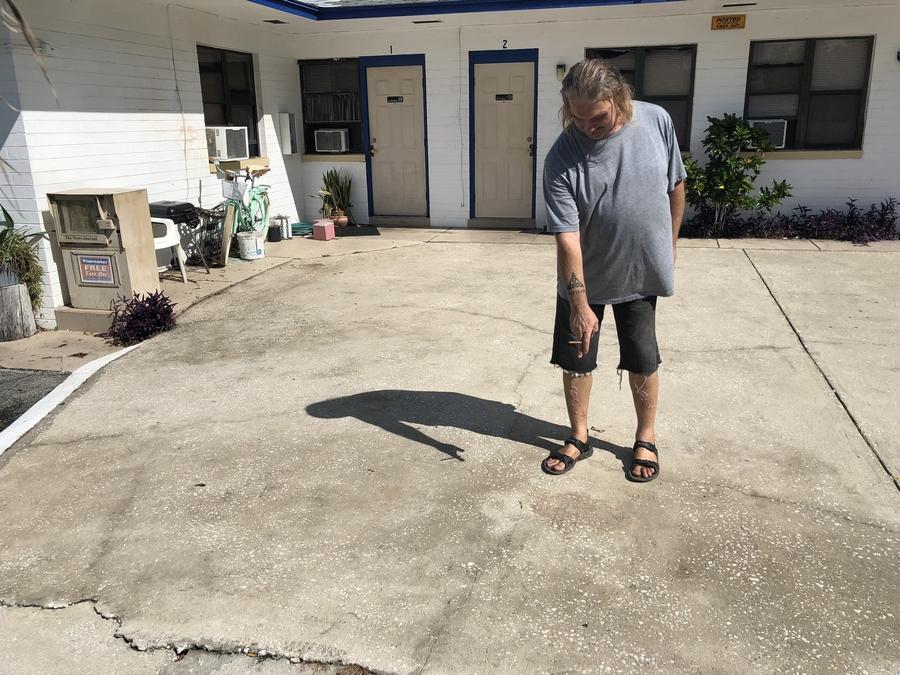
Singleton lay still, hoping the gunman would think he was dead. Singleton saw the man walk back to the Mazda, hold the gun up to his mouth and blow on the smoking barrel before tossing it in the car and driving away.
“Talk about pain,” Singleton said. “I felt something coming out of me hot.”
He reached back and touched the seat of his pants. “Is it my bowels?” he thought. “I smell my hands — blood. It felt like electricity in my ass.”
Inside, Urban, the manager, stepped into the corner “to get some concrete between me and the shooter,” he said. “It happened so quick.”
He called 9-1-1, then ran outside to offer assistance.
“Tracy was actually breathing while I was on the phone (with dispatch). Part of his brain was (showing),” Urban said. “He passed right before (emergency medical services) got here.”
Singleton and Trevon Height, now 23, were treated at Halifax Health Medical Center.
Pinckney drove around Volusia and Flagler counties before finally letting his girlfriend out on North Clyde Morris Boulevard, the arrest report states. A passerby found her there after 6 a.m. with her wrists still bound.
Authorities tracked Pinckney to an Ormond Beach motel a few hours later. He had a 9 mm handgun in his pocket. Pinckney confessed to shooting the three men, adding that “he knew what he did was wrong, and that he is sorry,” according to the arrest report.
Pinckney, 41, faces a first-degree murder charge, two counts of attempted first-degree murder with a firearm, possession of a weapon by a felon and armed kidnapping. Citing premeditation, the kidnapping and his previous violent felony conviction, court records indicate prosecutors intend to seek the death penalty.
Singleton, who says he once was a “gangster” but has retired, still lives at the Sun Plaza motel and suffers constant pain from his gunshot wound.
"I got a slug in my ass, in my hip, and (doctors) can’t take it out. It’s causing all kind of problems — arthritis, urination, my hip, my back,” he said. “It feels like piranhas eating at something, biting at something, and they won’t let go.”
He said he’s lost 25 pounds because of stress since the shooting. He sleeps in the daytime because of what might happen at night.
“You don’t need no TV. (Ridgewood Avenue) is a movie — junkie heaven, 24/7,” Singleton said. “I never get no peace.”
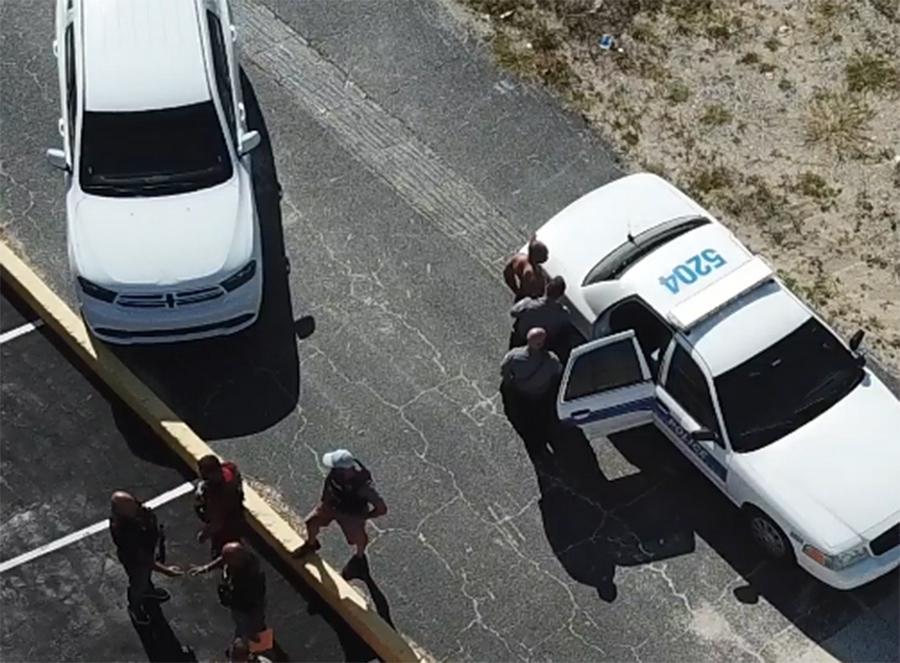
‘We tried to help him’
Wallace “Wayne” Wiggins was still breathing when Melody Hallock found him motionless on his bed.
She moved a pistol away from his bleeding head and out of reach and called for Terry Hallock, her husband.
The Hallocks, both in their early 60s, rented Wiggins a room in their Daytona Beach home. Wiggins was more than a longtime tenant — he was a good friend whose physical and mental health had deteriorated.
“He could barely survive. That’s why he lived with me,” Terry Hallock said. “We tried to help him as much as we could.”
Wiggins was unable to work and descended into depression. The Hallocks charged him a minimal fee for room and board, leaving him a few hundred dollars for cigarettes and beer.
He passed his days drinking in the backyard, so the Hallocks noticed when they returned home the afternoon of March 9, 2018, and Wiggins wasn’t at his usual post.
Melody Hallock started preparing dinner, and walked to Wiggins’ room to call him to the table. She found him lying on his back, air gurgling in his throat as he fought for breath. He had shot himself in the head.
Wiggins’ heart was still beating when paramedics arrived and transported him to Halifax Health Medical Center for treatment, a Daytona Beach Police report states, but he soon succumbed to his wounds.
Had Wiggins not used a gun to commit suicide, statistics show he likely would not have succeeded.
Less than 5 percent of non-firearm-related suicide attempts are fatal, according to the Everytown for Gun Safety Support Fund, a non-partisan, nonprofit organization dedicated to understanding and reducing gun violence nationwide. In contrast, approximately 85 percent of gun suicide attempts end in death, Everytown research shows.
Here both numbers are higher: Of the 419 attempted suicide incidents The News-Journal analyzed that did not involve firearms, only 63 — 15 percent — resulted in death. But every gun suicide attempt was fatal.
White men accounted for more than 78 percent of firearm suicides — about 4 percent above the national average, according to Everytown research.
Nearly half of the 89 people who shot themselves to death here last year, including four women, were age 60 or older.
Like Wiggins, 64, many exhibited deteriorating mental health, struggled with severe medical conditions or were grieving lost loved ones.
Wiggins was taken into involuntary custody for mental health evaluations more than once, Terry Hallock said. A few days before his suicide, he took 30 pills “to harm himself,” according to the police report. Terry Hallock suspects Wiggins also may have been secretly battling a serious illness.
The week Wiggins died, the Florida Legislature voted on a package of gun-control measures that included a so-called “red flag law.” The measure, which has since gone into effect, states that police can request that a judge sign a risk-protection order allowing them to temporarily confiscate guns and ammunition from someone they believe is a threat.
A hearing must be held within 14 days to determine if the order should be extended for a year.
The law would have allowed Hallock, for instance, to report Wiggins’ deteriorating health to police, who then could opt to obtain a judge’s order and, if granted, take Wiggins’ gun.
Making the public aware of the red-flag law is part of the mission of organizations such as Moms Demand Action, which advocates for safety measures that will protect people from gun violence, said Gay Valimont, volunteer leader of the Florida chapter.
“You shouldn’t wait to see if a loved one may or may not be sad enough to use a weapon against themselves,” Valimont said. “(A risk-protection order) can be a huge help in preventing suicide, particularly among people with no history or criminal background” that would prevent them from owning a firearm.
The traumatic scene Melody Hallock discovered that March afternoon has been hard for her to shake.
“(She) got real secluded for a while,” Terry Hallock said. “I have this little dog. She uses that dog kind of for her therapy. She’s doing better.”
Wiggins’ brother visits often, and the Hallocks set a place at the table where Wiggins always sat.
“We’ve got a special little spot set up,” Terry Hallock said.
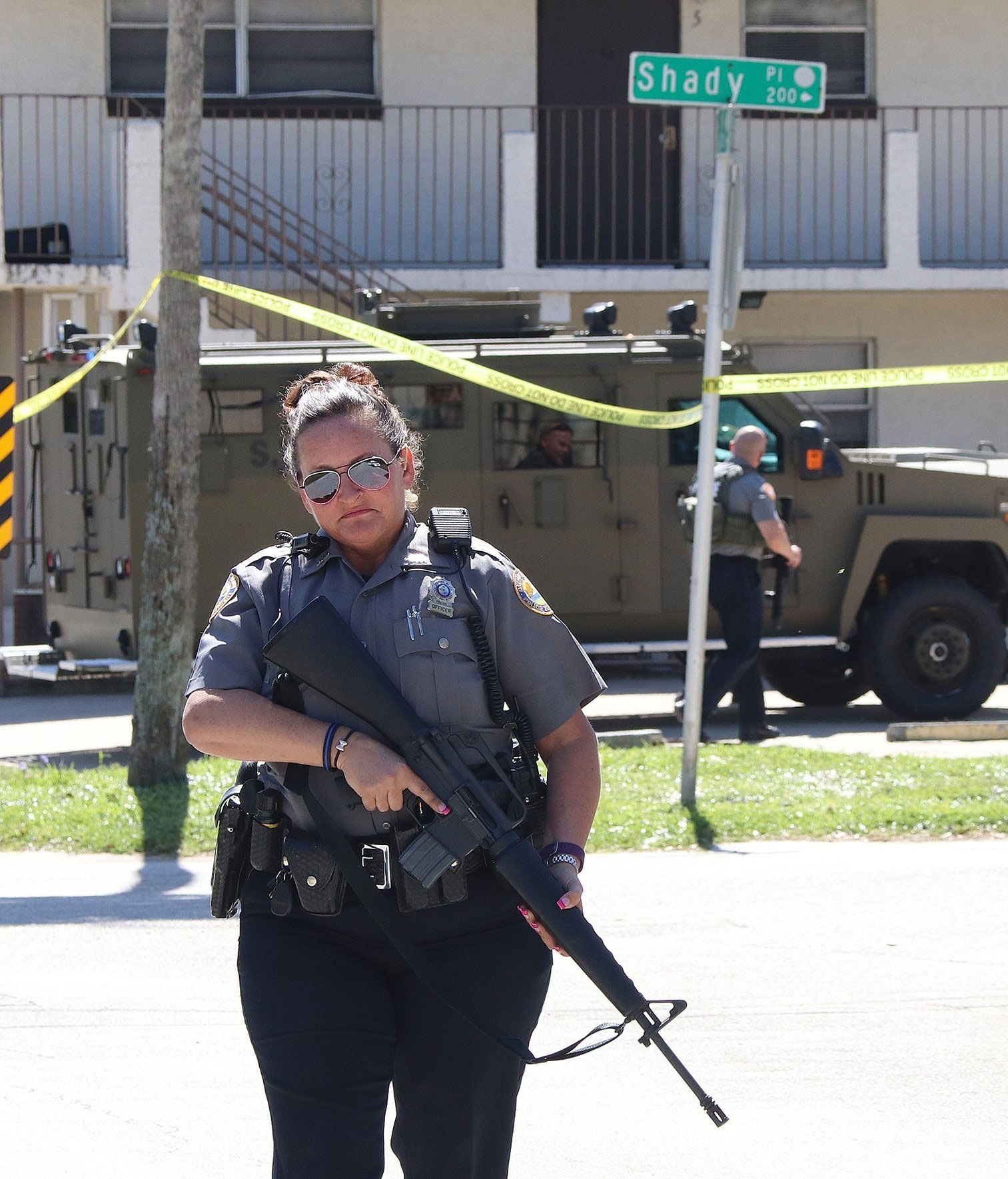
‘I can’t believe I just did that’
Christopher Mazza looked down at his right foot to see if his toes were still there.
“I can’t believe I just did that,” he thought to himself.
He had pointed his handgun at his car’s floorboard and pulled the trigger. He only meant to clear the weapon. Loaded guns aren’t allowed inside the shop where he was headed to trade in his 9 mm Glock 43 on a June afternoon.
He didn’t realize a bullet was in the chamber until it blew through the “big, fat meat part” of his right foot, breaking the bones and web of skin connecting his third and fourth toes.
He was stunned — from the pain, yes, but mostly that it had happened at all.
“I’ve been shooting guns a long time. I’ve got a concealed weapons permit. I was more shocked that I actually did it than at the bullet wound,” Mazza said.
Nine percent of local shootings were accidents in 2018. In all 16 cases, the shooters were males.
After Mazza shot his foot, there was “blood everywhere,” he said. He remained calm enough to wrap the wound and make the 2-mile drive from the intersection of Clyde Morris Boulevard and Hand Avenue in Ormond Beach to AdventHealth Daytona Beach. He hobbled into the emergency room and waited to be seen.
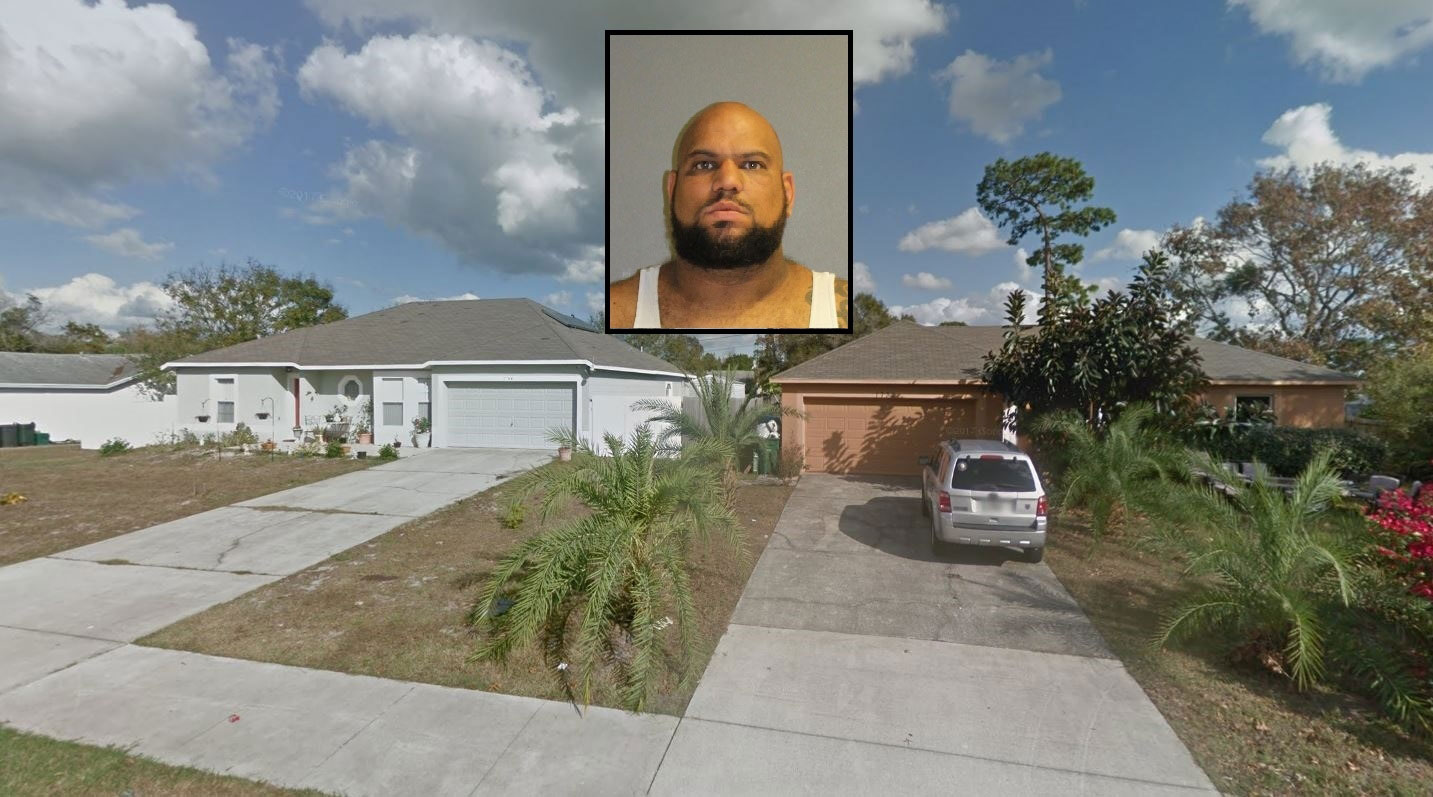
“(My foot) swelled up like a ball so I thought (the bullet) was in there, but it wasn’t. It went straight through,” said Mazza, a Port Orange trucking company owner. It had pierced his flip-flop and the gas pedal before disintegrating in the vehicle’s undercarriage.
A doctor took an X-ray, gave him a tetanus shot, prescribed antibiotics and sent him on his way that Friday afternoon. The following Monday, Mazza returned to work wearing a medical boot.
The most difficult and painful part of the whole ordeal was not the initial injury but what came next. He had to wash the wound once a day to ward off infection and keep his toes spread and exposed to the air at night.
Four months later, as soon as he could wear shoes, he returned to the shooting range. He was nervous but determined. “You get thrown off the horse, you gotta get back on,” Mazza said.
He has a few lingering foot issues. “I got nerve damage, so my toes tingle every so often. (My foot) swells up here and there,” he said.
Mazza is extra cautious handling guns now, and he kept the damaged gas pedal as a reminder. He knows he got lucky — a higher caliber gun could’ve inflicted a much more serious wound: “If I’d used a .45 instead of a 9 mm, I wouldn’t have any toes left.”

One year of Volusia-Flagler shootings - how we did it
To report this project, The Daytona Beach News-Journal for the first time ever compiled records on every shooting over the course of a year in which a person was killed or wounded in Volusia and Flagler counties.
Our reporting sought to include every shooting victim from 2018, including those shot by others or themselves, intentionally or by accident.
Police and other government agencies don’t list or track every shooting injury — many are non-criminal — so reporters Suzanne Hirt, Frank Fernandez, Patricio G. Balona and Matt Bruce made dozens of public records requests to all 15 local police agencies to obtain incident reports on the 176 people shot in 2018. The aggregated data and details — provided with analysis and visualization help from Data Editor Dinah Voyles Pulver — became the basis for this project.
We found that shootings that were investigated as crimes were well documented by law enforcement. But other incidents involving people being shot — especially suicides — were sometimes coded differently, and records officials missed some shootings on the first request for a report. In early January, we believed we had reports of all the shootings, only to find through a records request to the Volusia County Medical Examiners Office that there were 36 more self-inflicted gunshot deaths.
The News-Journal, except in rare instances, doesn’t write stories about suicides that are committed in private, so without even a news report, public documents were much harder to obtain weeks or months later.
"The cold fact that the vast majority of fatal shootings turned out to be suicides is something that deserves further reporting," said News-Journal Editor Pat Rice. "Whatever one's thoughts are about guns, it's important that as a community we work harder to prevent people from harming themselves. That's an issue The News-Journal will continue to pursue."
As the data collecting continued, reporters attempted to contact all 64 people who survived a shooting last year. Most were hard to reach or find, but Hirt interviewed several of them and their loved ones, including: a woman whose partner shot her at close range; two children wounded in accidental shootings; two men who shot themselves unintentionally; and the roommate of a man who committed suicide. Other survivors reached declined to discuss their ordeals.
Fernandez looked at gun suicides, which accounted for the majority of local and national shooting deaths last year. Fernandez spoke to a mother whose adult son shot himself to death in their Volusia County home four years after the son witnessed an undercover sheriff’s deputy shoot and kill his father.
Reporters also mined federal government agencies’ databases and reports to bring context to the local data The News-Journal collected. Sources used outside of local law enforcement include the Centers for Disease Control and Prevention, suicide-prevention and firearms injuries studies and, for fatalities, medical examiners.
John Gallas is The News-Journal's deputy managing editor for digital and editor for crime, courts and breaking news in Volusia County.